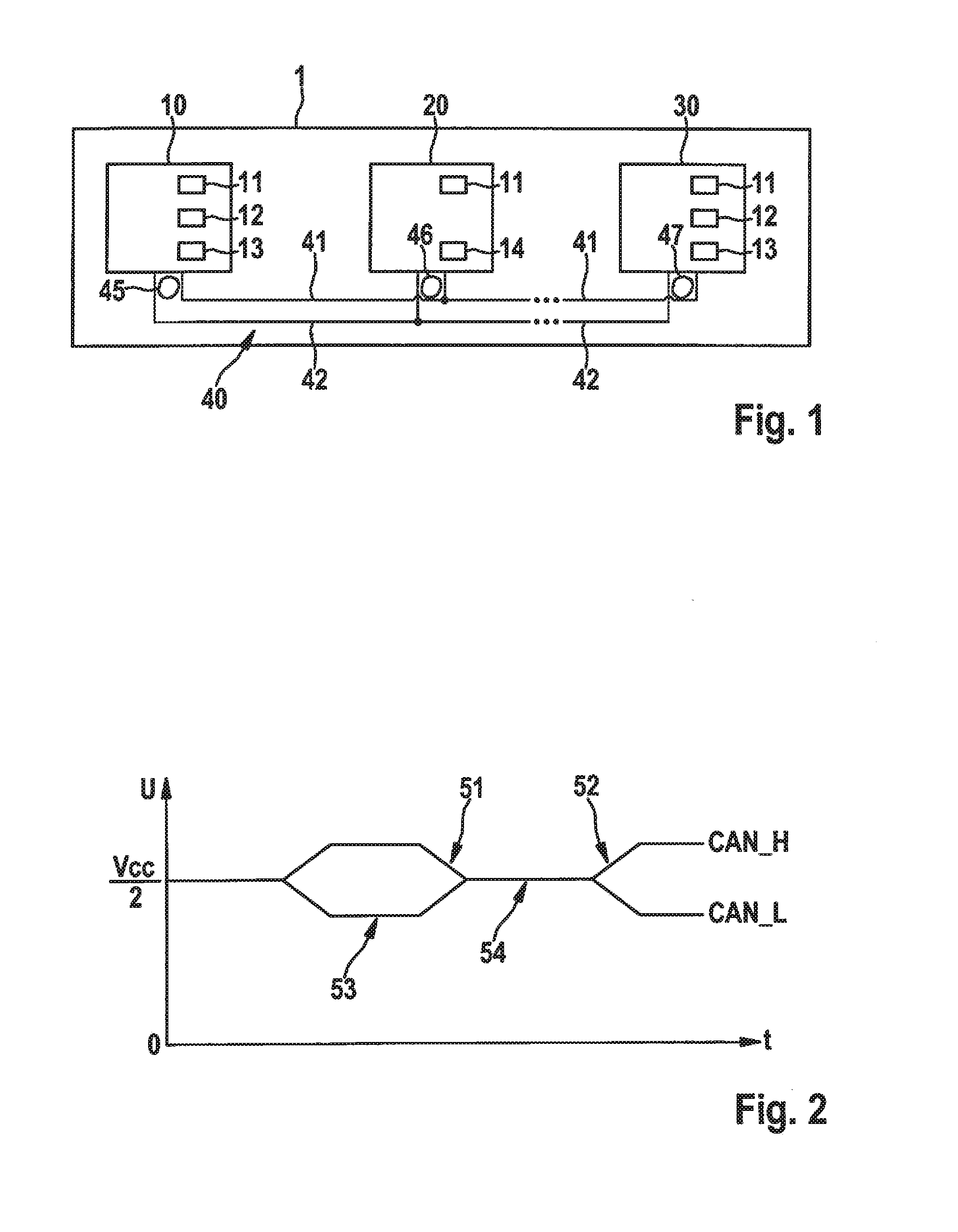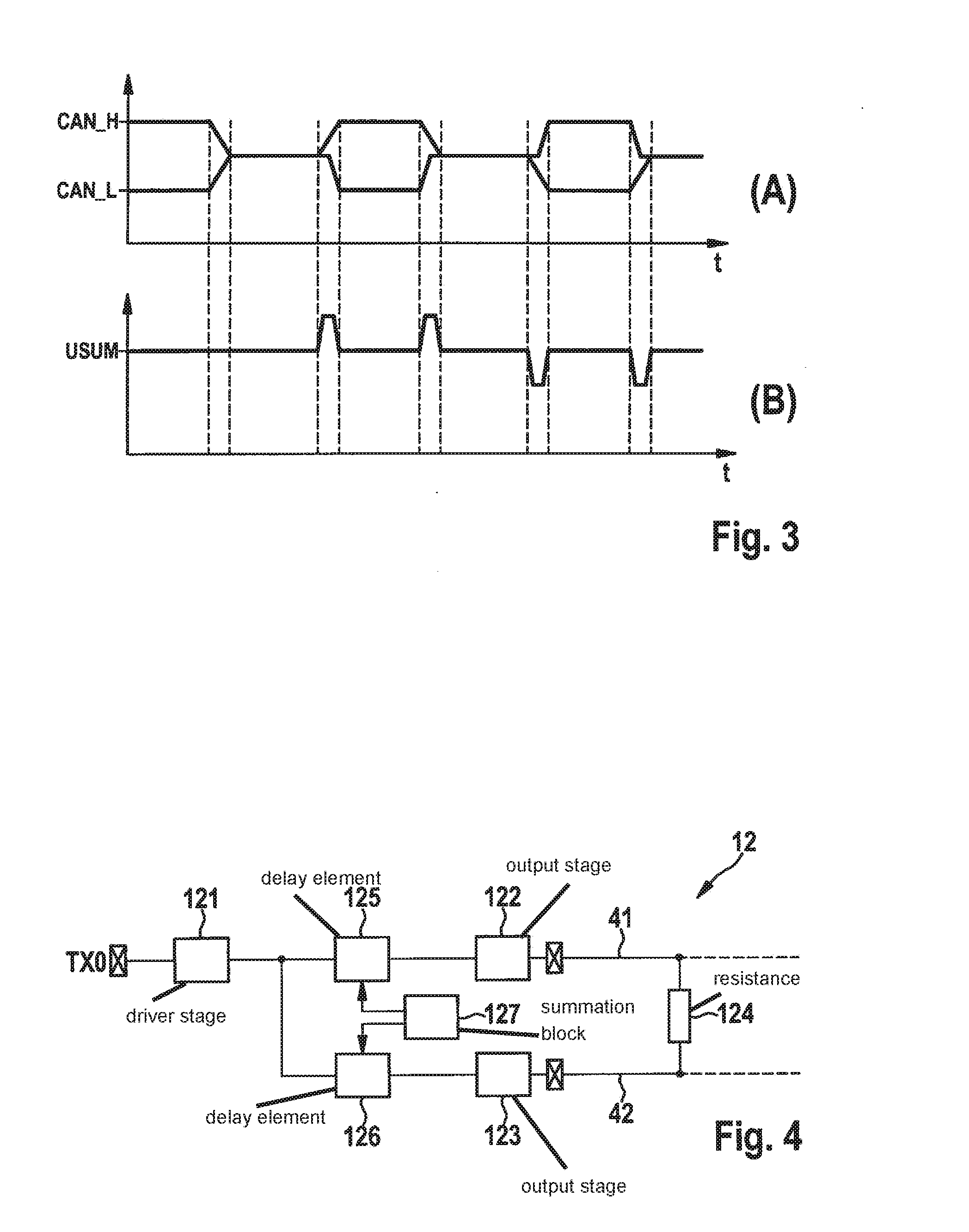Subscriber station for a bus system and method for reducing line-conducted emissions in a bus system
a bus system and subscriber station technology, applied in the direction of instruments, data switching networks, liquid/fluent solid measurement, etc., can solve the problems of switching edges and subject to aging, and achieve the effect of reducing the radiated interferen
- Summary
- Abstract
- Description
- Claims
- Application Information
AI Technical Summary
Benefits of technology
Problems solved by technology
Method used
Image
Examples
Embodiment Construction
[0028]FIG. 1 shows a bus system 1 that can be for example a CAN bus system, a CAN-FD bus system, etc. Bus system 1 can be used in a vehicle, in particular a motor vehicle, an airplane, etc., or in a hospital, etc.
[0029]In FIG. 1, bus system 1 has a multiplicity of subscriber stations 10, 20, 30, each connected to a bus 40 with a first bus lead 41 and a second bus lead 42. Bus leads 41, 42 can also be named CAN_H and CAN_L, and are used to couple in the dominant level in the transmit state. Via bus 40, messages 45, 46, 47 can be transmitted in the form of signals between the individual subscriber stations 10, 20, 30. Subscriber stations 10, 20, 30 can for example be control devices or display devices of a motor vehicle.
[0030]As shown in FIG. 1, subscriber stations 10, 30 each have a communication control device 11, a transmit device 12, and a receive device 13. In contrast, subscriber station 20 has a communication control device 11 and a transceiver device 14. Transmit devices 12, r...
PUM
 Login to View More
Login to View More Abstract
Description
Claims
Application Information
 Login to View More
Login to View More - R&D
- Intellectual Property
- Life Sciences
- Materials
- Tech Scout
- Unparalleled Data Quality
- Higher Quality Content
- 60% Fewer Hallucinations
Browse by: Latest US Patents, China's latest patents, Technical Efficacy Thesaurus, Application Domain, Technology Topic, Popular Technical Reports.
© 2025 PatSnap. All rights reserved.Legal|Privacy policy|Modern Slavery Act Transparency Statement|Sitemap|About US| Contact US: help@patsnap.com



